| |
There’s
Something In the Air
The East -
West German border was certainly an area that tended to
collect cutting edge military technology of every stripe.
Cav troopers may recall being part of early fielding of a
number of new vehicles and systems, the M901 Improved Tow
Vehicle, the M109A2 howitzer, M60A3 tank, first generation
thermal imaging sights / viewers and the AN/PPS5A - B ground
surveillance radar set immediately come to mind. Although
many of these systems had been under development for some
time, when the money broke loose under President Regan, the
cool stuff really started to flow. But even back in the
early 1960s, now and then, space age equipment showed up at
the border. Sam Compton tells the story.
Radar Sam
I was trained
as an infantry man and assigned to the 3rd Armored Infantry
Battalion of the 50th Infantry Regiment, located at
Wildflecken. During my assignment, the unit was re -
designated as 2nd Bn - 15th Infantry, 3rd Infantry
Division. Our primary job beyond all the normal training
was to serve as the OPFOR for other units as they visited
the training areas. In June, 1962, some of us were selected
for training on the new ground surveillance radar system,
AN/ PPS 4 that was being tested in Germany. We traveled
down to Aschaffenburg for six days of training.
| |
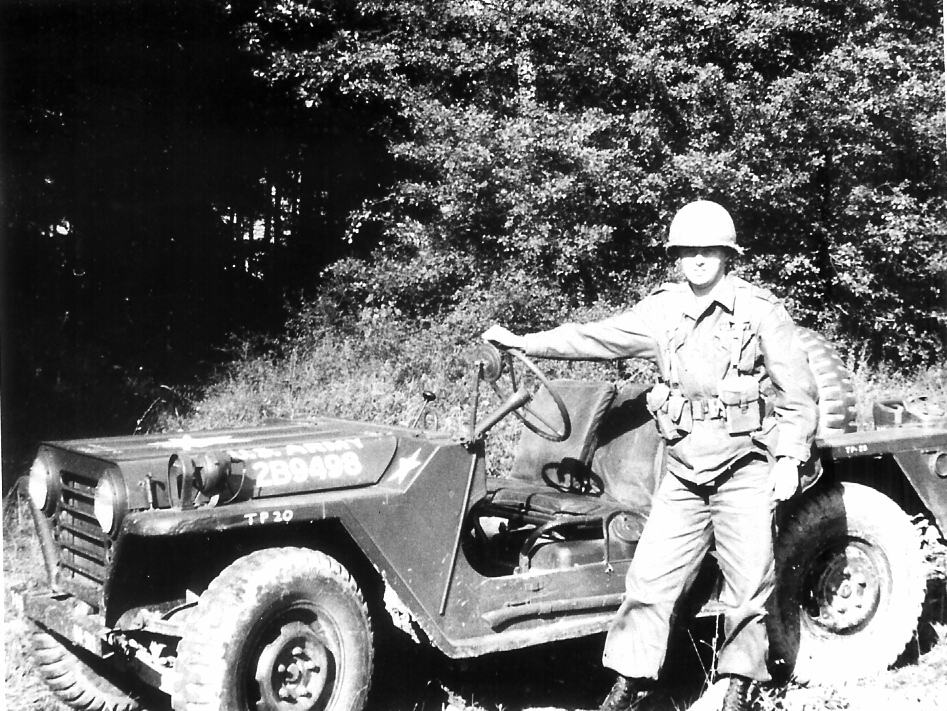 |
|
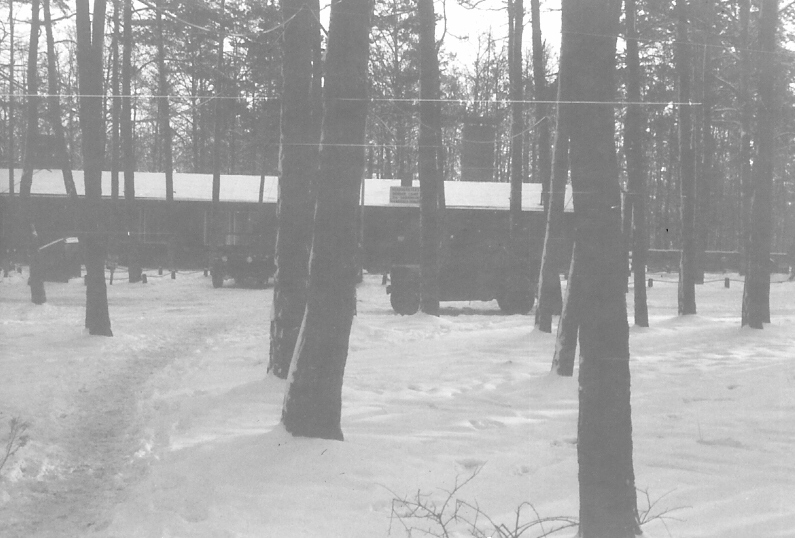 |
|
| |
Here I am at Wildflecken in 1962. |
|
Looking out from the tent area towards the
Camp Wollbach Ops Center |
|
This radar
system looked like a large pail set up on a tripod hooked to
a control panel by heavy cables. It was powered by a
generator and had an effective range of about 1000 meters.
The operator listened with headphones as the radar unit
would be slowly panned by hand across its sector. When you
set up, you also had to do a map study so that contacts you
heard could be referenced to map locations.
Basically,
this was an early Doppler radar system, the beam traveled
line - of - site from the device and registered an audible
tone in the headset when movement was detected. A man
walking in the beam gave a sound return similar to someone
walking on a hardwood floor wearing heavy rubber boots. A
group of men gave a different sound, a truck - a medium
whine, a tank a deeper whine and so on. In standard search,
the device gave off a pulsing ping and the operator heard
nothing. If movement was returned, we got the audio cue and
then could fine tune using controls for the best signal,
distance to target and target type. It worked best on heavy
vehicles like tanks but could detect humans, even animals
under the right conditions. We operated in teams of three
men and carted our equipment in a ¾ ton truck with a shelter
box on the back. I guess for its day, it was pretty high
tech.
| |
 |
|
 |
|
| |
Here I am with the ground surveillance
radar set. |
|
This photo shows our truck, the shelter built on the rear, the
three man crew and the radar equipment. |
|
As I recall,
when we were part of the testing period, we were using a
prototype of the radar, then somewhat later, we were issued
an improved model that looked and operated about the same.
Because real
world experience with the system was the best operator
training, our radar sections were often attached to the
cavalry units nearby and this brought me to Camp Wollbach
many times and as far southeast as Coburg once. The 2 - 14
ACR border camp at the time was not much to talk about;
there was a combination ops building, cooking area, briefing
area and that was about it. It was staffed by a platoon
rotated up from Bad Kissingen, maybe with some augmentation,
we all slept in tents. The routine was two weeks at the
border camp and then two weeks back at Wildflecken.
| |
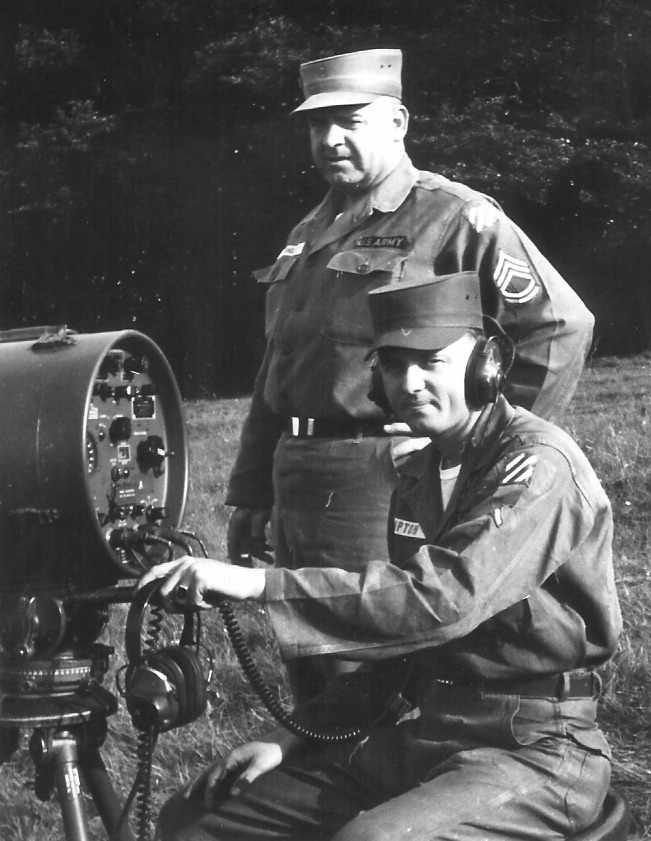 |
|
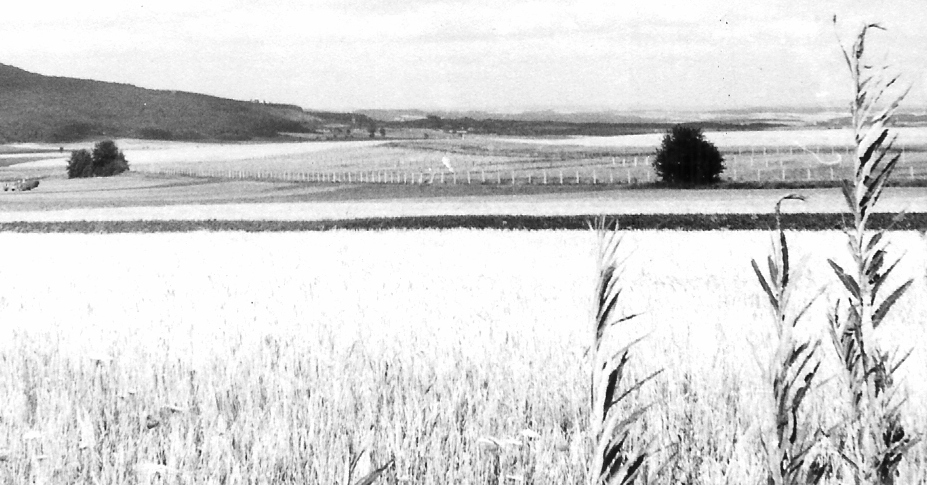 |
|
| |
Radar Sam and SFC Langley |
|
A Series of five photos that show the
border areas we worked in. |
|
Along the
border, we had seven areas that were routinely used as radar
observation sites. These had good sensing lanes for the
radar - these were also good areas for an armored attack so
it was an ideal combination for both training and tactical
observation. We would be briefed as to which one to use and
head out so that we could be set up just after nightfall.
Often times, we were accompanied by a couple of cav jeeps
and a few troopers for security. We would observe all night
and then break down the equipment and be on our way back to
camp just prior to first light. I believe that our team was
the first use of ground surveillance radar in that 14th Cav
sector
You would be
surprised just how busy and how porous the border might be
on some of these nights. Much of our border area still only
had light, if any East German barbed wire. It was not
uncommon for the East Germans to be working with hand tools
under cover of darkness setting up that second generation of
fences and there were plenty of occasions when trip flares
would go off, maybe animals or the weather, and this led to
indiscriminate gun fire from the East. There were two
nights that really stand out in my mind from that border
duty and both involve the East Germans who really wanted to
get their hands on one of our radar sets.
| |
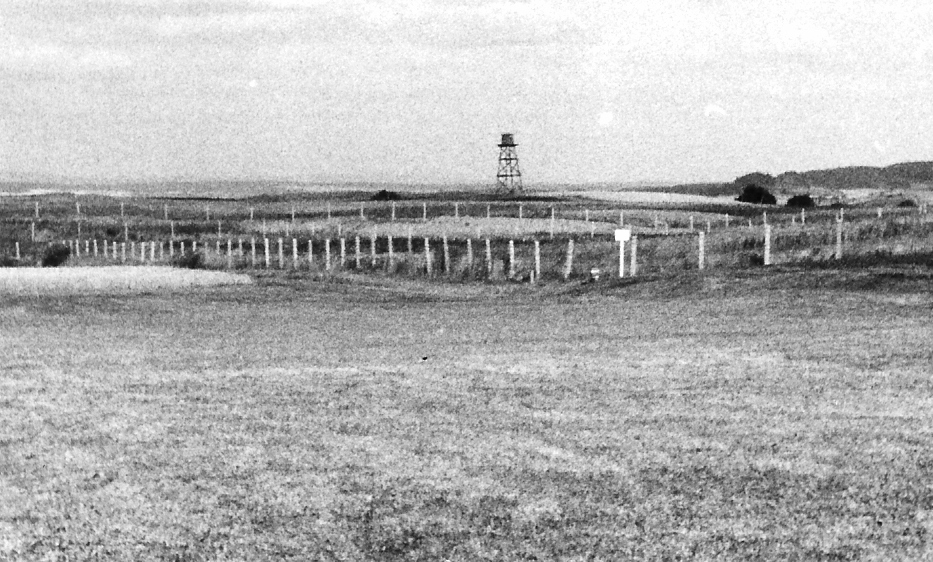 |
|
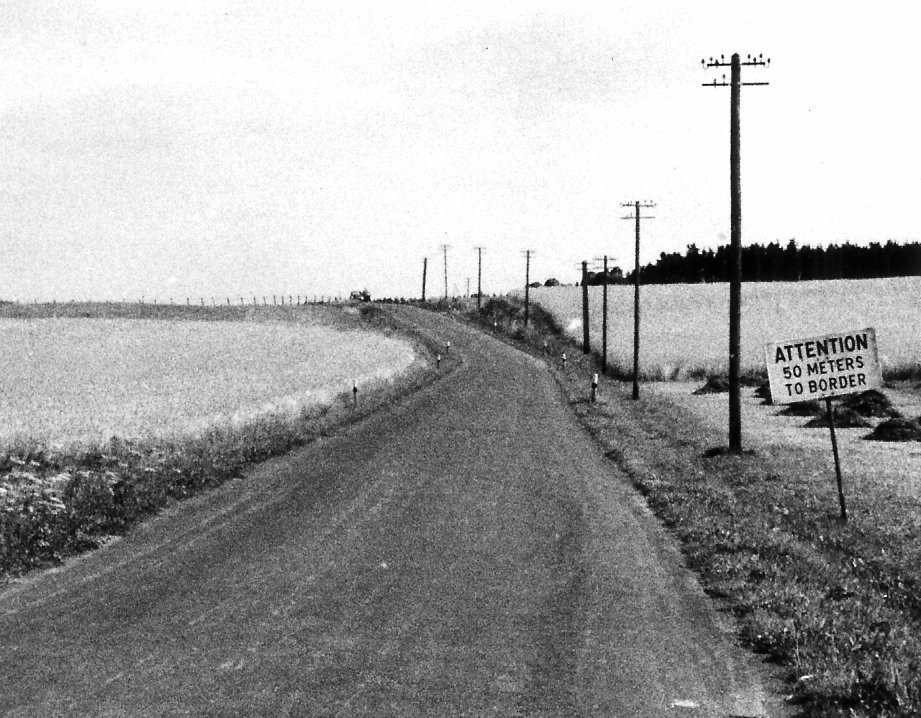 |
|
| |
|
|
|
|
One Winter
night, we were set up and a huge snowstorm blew in. When we
finally pulled out, making headway on the roads and trails
was nearly impossible. We got just out of the border area
when it became apparent that we could not get back to camp
and we reported our situation. They weren’t having any
better luck getting out of the border camp to help us so we
sat huddled next to the truck heater and as the day wore on,
we ran out of gas. Eventually, a cav Lt set down in a light
helicopter and brought us coffee and said a better plan was
in the making. Some time later, a heavy helicopter came in
to pick us and the radar set up. We heard later that East
Germans were reported in the area, they probably wanted to
rescue the radar set as well.
| |
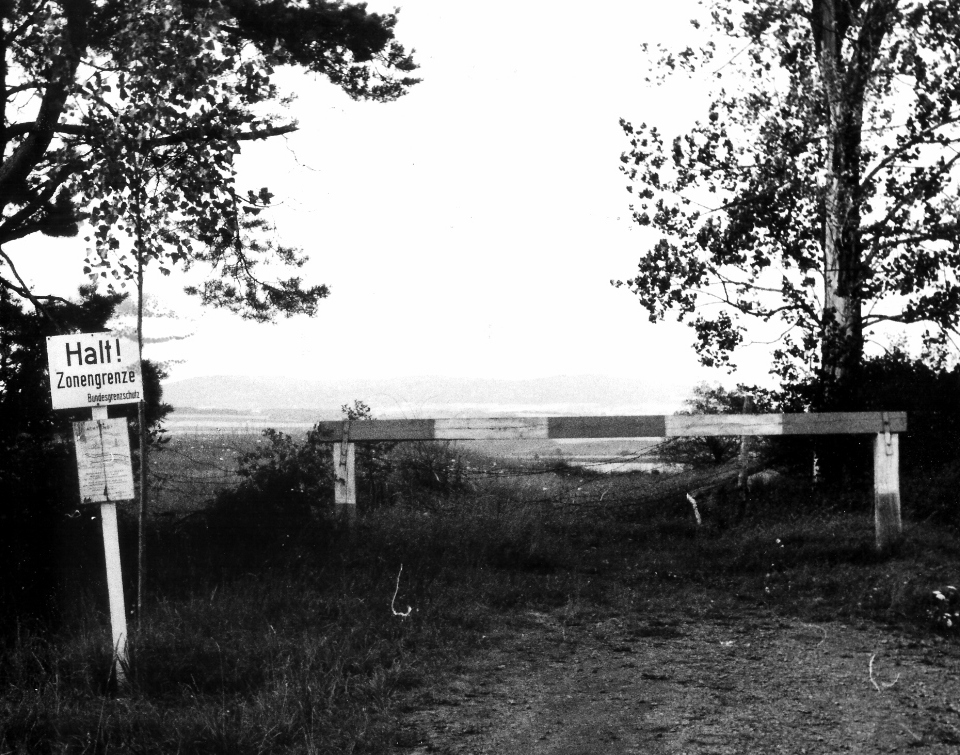 |
|
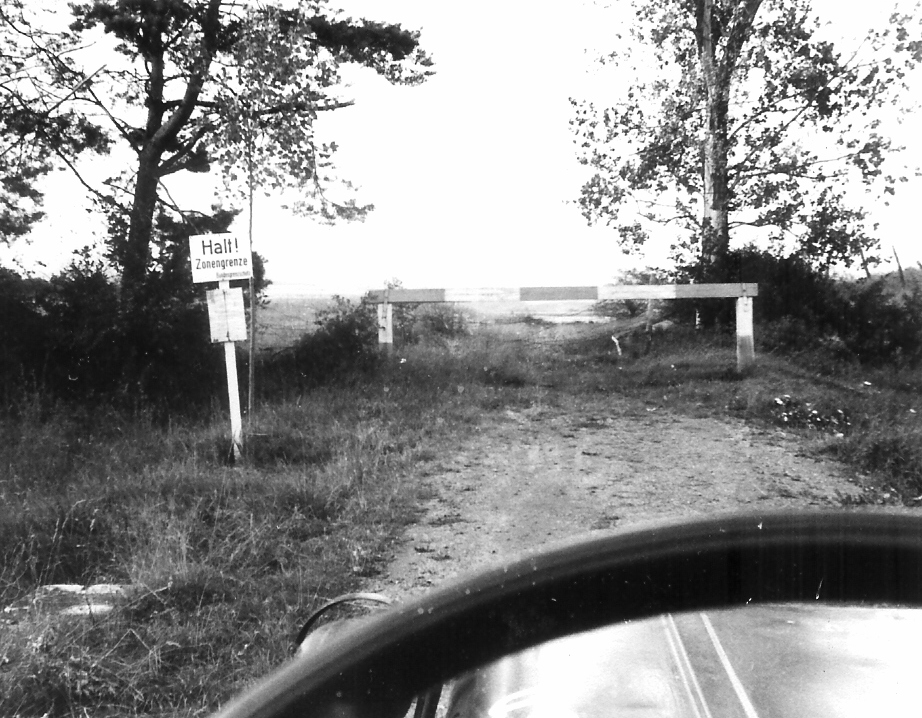 |
|
| |
|
|
|
|
On another
occasion, we were out at one of the usual spots, right up on
the border, as a matter of fact, East Germany was on three
side of us. We had set up a ring of concertina wire and had
a security team from the cav with us as well, this was a
standard operating procedure. On the set, we got an
unusually heavy contact slowly moving around, something like
a tank or heavy truck and made our spot report. Just a
short time later, the security team reported voices nearby
so we shut down the generator to listen; and then the little
“ rattles “ that were hung on the wire began to sound off -
needless to say - this was too close for comfort! We pulled
in the security, threw the equipment into the back of the
truck and took off like the whole Russian army was behind
us. When we finally got out of that area and into the
clear, they guys in the back told me that the East Germans
had been right on our tails when we left, pounding on the
back of the truck and trying to hang on! Do not know if it
was a detail working on the fence that had blundered into us
while making a short cut along the border or if this was a
real attempt to seize us and the equipment. I can tell you
this - it did happen!
Just to wrap
thing up, after I got out of the Army, I went into private
business and owned a company that represented manufacturers
and their products. This allowed me to travel back to
Germany several times and once, 1990 or so, after the border
had opened and the Army was out of the border camp, I
happened to drive over just to see the place. Of course, a
lot had changed but I was able to walk into the camp and
take the modern day photo from the same point of view
showing where the helicopter had landed after rescuing us
from the snow storm.
| |
 |
|
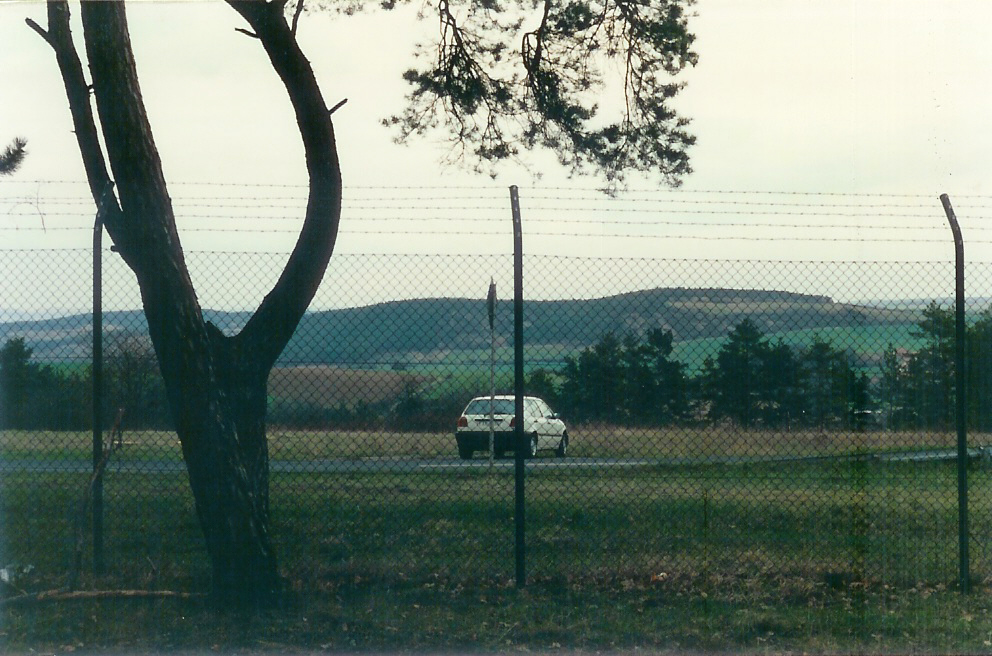 |
|
| |
There is the helicopter that scooped us up
after the big blizzard. |
|
Fast forward to the same view in 1990. |
|
In
retirement, I am active with the US Army Veterans of
Wildflecken organization and am planning for a reunion at
the old post on the hill, a tour of the former border region
and an extended tour down the Romance Road in Bavaria. For
the Wildflecken part of the stay, we suggest standard Summer
attire, wool hats, mittens and overshoes.
September 2012
|
|